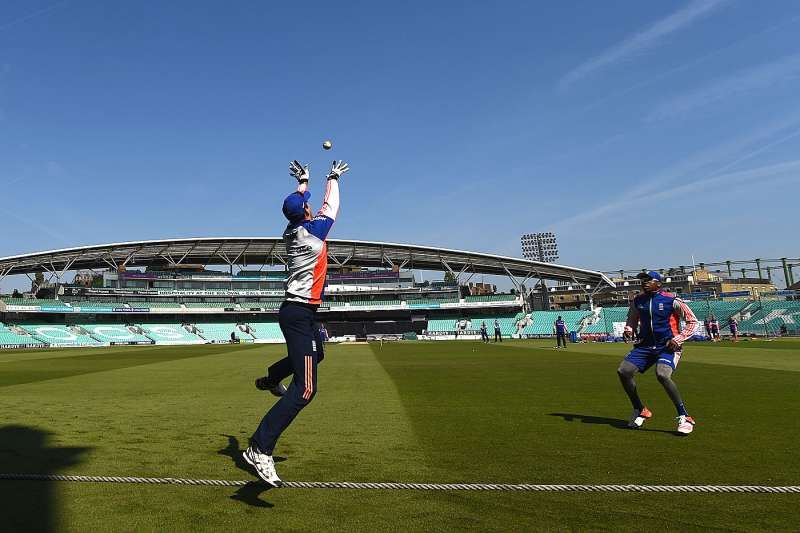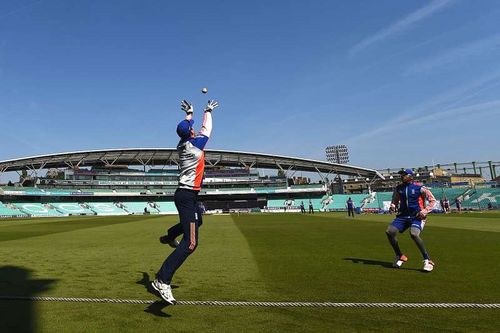
Relay catching: Newest addition to the cricketing manual

As fast as the game, as a whole, has progressed into a swifter and sleeker version of its former self, every aspect of it has evolved, fielding clearly being one of them. Safe hands and sturdy legs won’t suffice; one needs to be nimble on his feet and show remarkable athleticism to survive as a fielder at the top-most level.
One of three main features of the game, fielding is oft-neglected, basically because it is not part of the actual action between the bat and ball, but a follow-up to it. With the game earning more sharpness as it reached the 90s, fielding’s importance started gaining ground.
Over the next two decades, it has improved by leaps and bounds. The advent of T20s has made it imperative to save every run and this is where sharp fielding comes into play.
The last few years have seen new additions to the conventional fielding efforts. Most of them are extensions of the basic drills, improvisations that create more chances and give the fielding side a much-needed edge. And it is not just limited to the top-most level, it is slowly being ingrained in youngsters as well.
With smaller boundaries and broader bats in play, outfielders are now seen pouching catches at the edge of the ropes. These days, it isn’t just a solo effort. Combination efforts at the boundary have become a common practice.
In a video released by David Foster, the head coach at the Pro Coach Yorkshire, kids are seen practising the newest form of fielding at their indoor arena. It was a follow-up to Glenn Maxwell’s incredible effort at the ropes against Western Australia in the Matador Cup a few days back.
The primary fielder, stationed closer to the ropes, jumps to catch hold of the ball. The technique requires correct timing of the leap so that the ball is collected when the fielder is at his highest point of jump, giving him enough time to land back after the ball has been released from his hand.
The aim is not to hold the ball but to parry it back in play, so that the other fielder can get in position and complete the catch.
It started off as individual efforts at the boundary ropes, with outfielders using every inch of the space to somehow pull the ball back.One of the earliest instances of such a catch was Andy Bichel effort on the boundary during the World XI vs New Zealand 10 over match in 2005.
Positioned at long-off, he leapt up to take the catch one handed. Realising that he is off-balance, Bichel managed to lob the ball in play while balancing on one foot. He then gained his footing to stand upright and complete the catch.
Another incident that made the fans sit up and notice this technique was David Hussey’s effort in the third edition of the IPL in 2010. Playing for KKR, Hussey was standing at long-on when Paul Collingwood smacked Charl Langeveldt for what looked like a flat six. Hussey suddenly emerged on the scene and started his three step process.
He first took the sting out of the shot by parrying it over him. The momentum took the ball took the ball towards the fence when his outstretched right hand came to the rescue, lobbing the ball once again. He leapt to push the ball in, while staying mid-air, and was quick to change direction and hurl himself back into the ground, in time to complete a sensational catch.
Combination fielding efforts have lately become the highlight of T20 fielding. Even for grounded shots, at least two fielders give chase, ensuring that one of them is there to back up and throw after the first fielder has pulled the ball back inside the ropes.
Tim Southee - Karun Nair’s incredible effort during an IPL match between Kings XI Punjab and Rajasthan Royals last year made for a captivating sight. With Nair for backup, Tim Southee leapt up and pulled the ball in with his right hand. Nair, ready next to him, dived to his right and completed the catch.
Shane Watson and David Wiese combined for a similar effort in the IPL this year.
Jonty Rhodes’ superhuman effort in the 1992 World Cup was the poster moment for fielding. A quarter of a century later, fielding continues to grow.